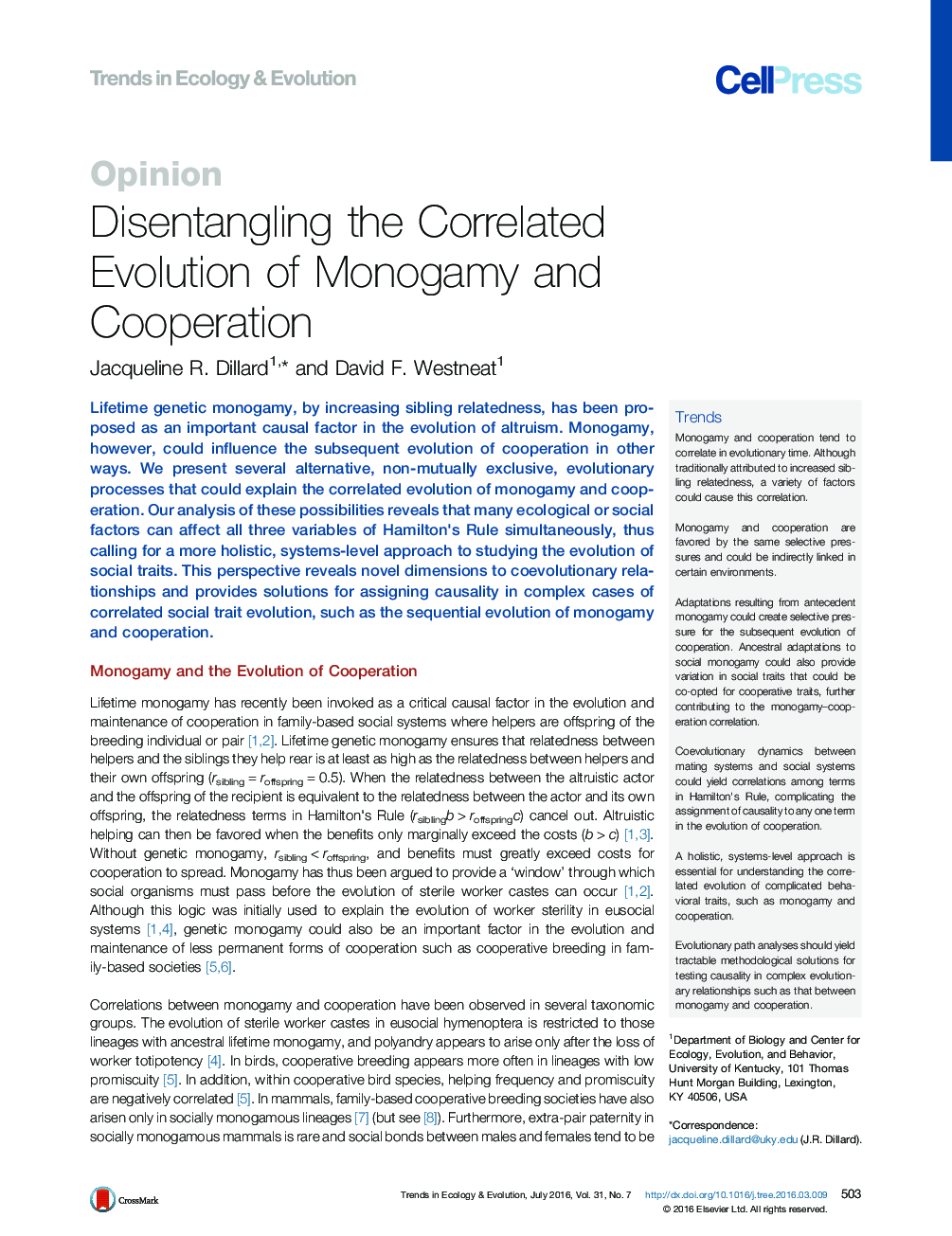| Article ID | Journal | Published Year | Pages | File Type |
|---|---|---|---|---|
| 142291 | Trends in Ecology & Evolution | 2016 | 11 Pages |
Lifetime genetic monogamy, by increasing sibling relatedness, has been proposed as an important causal factor in the evolution of altruism. Monogamy, however, could influence the subsequent evolution of cooperation in other ways. We present several alternative, non-mutually exclusive, evolutionary processes that could explain the correlated evolution of monogamy and cooperation. Our analysis of these possibilities reveals that many ecological or social factors can affect all three variables of Hamilton's Rule simultaneously, thus calling for a more holistic, systems-level approach to studying the evolution of social traits. This perspective reveals novel dimensions to coevolutionary relationships and provides solutions for assigning causality in complex cases of correlated social trait evolution, such as the sequential evolution of monogamy and cooperation.
TrendsMonogamy and cooperation tend to correlate in evolutionary time. Although traditionally attributed to increased sibling relatedness, a variety of factors could cause this correlation.Monogamy and cooperation are favored by the same selective pressures and could be indirectly linked in certain environments.Adaptations resulting from antecedent monogamy could create selective pressure for the subsequent evolution of cooperation. Ancestral adaptations to social monogamy could also provide variation in social traits that could be co-opted for cooperative traits, further contributing to the monogamy–cooperation correlation.Coevolutionary dynamics between mating systems and social systems could yield correlations among terms in Hamilton's Rule, complicating the assignment of causality to any one term in the evolution of cooperation.A holistic, systems-level approach is essential for understanding the correlated evolution of complicated behavioral traits, such as monogamy and cooperation.Evolutionary path analyses should yield tractable methodological solutions for testing causality in complex evolutionary relationships such as that between monogamy and cooperation.
